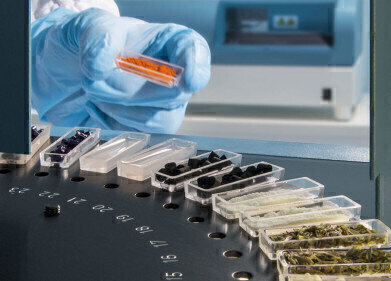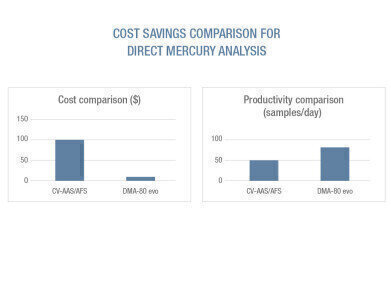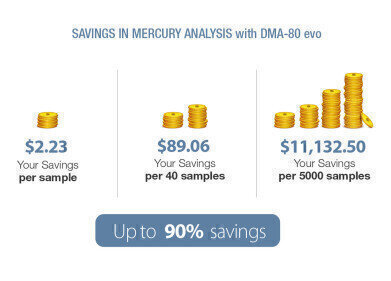Environmental Laboratory
The Cost Benefits of Direct Mercury Analysis: Do You Know the Bottom Line?
Apr 27 2022
Imagine you are working in a large contract laboratory, and are beginning to get more and more requests for mercury analysis.
You have always used a traditional dedicated mercury analyzer utilizing cold vapor atomic absorption or atomic fluorescence spectrometry (CV-AAA or AFS), which are well suited for liquid samples with low mercury content including drinking water and surface waters. However, for the solid and other liquid samples that came into your lab, they had to go through an appropriate dissolution step prior to analysis, which in many cases involved microwave digestion. And because of the high volatility of mercury, these dissolution techniques can often lead to loss of analyte and poor recoveries if the optimum digestion technology isn’t used, possibly resulting in sample reruns, which can impact lab efficiency, operator time, and the overall cost of analysis.
So, with this information fresh in your mind, it has you thinking that a novel approach known as Direct Mercury Analysis (DMA) that can determine mercury directly in solid and liquid samples using the principle of thermal decomposition coupled with amalgamation and atomic absorption might be the way to go.
To stay with traditional dedicated mercury techniques such as CV-AAS/AFS or perhaps move some of the samples over to the ICP mass spectrometer (ICP-MS), which is predominantly used for drinking water and wastewater analysis, or to invest in the direct mercury technique. So, let’s take a closer look at the comparison in running costs between the Milestone DMA-80 evo and CV-AAS/AFS, and also how they stack up against ICP-MS, to see if the investment can be justified.
The Milestone DMA-80 evo Direct Mercury Analyzer offers more than double the productivity of traditional techniques at a fraction of the cost and is suitable for a wide range of samples. To fully understand the differences, it’s important to break the dedicated mercury analysis methods into their different components: pre-digestion handling, sample digestion, post-digestion handling, and sample analysis and then compare the associated costs for each step with the DMA-80 evo method.
Digital Edition
IET 34.2 March 2024
April 2024
Gas Detection - Biogas batch fermentation system for laboratory use with automatic gas analysis in real time Water/Wastewater - Upcycling sensors for sustainable nature management - Prist...
View all digital editions
Events
Apr 30 2024 Melbourne, Australia
Apr 30 2024 Birmingham, UK
May 03 2024 Seoul, South Korea
May 05 2024 Seville, Spain
May 06 2024 Minneapolis, MN, USA




















